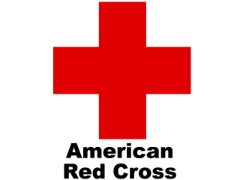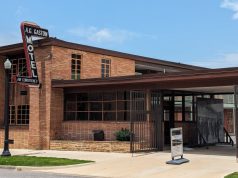 Developing an Emergency Plan is the First Step
Developing an Emergency Plan is the First Step
HOOVER, Ala., September 2, 2013 — Disasters can strike quickly and often without warning. During National Preparedness Month, the American Red Cross, Alabama Region, encourages all households to get ready for the next emergency or disaster.
“Having a game plan in place is essential for all households so everyone knows what they should do when an emergency occurs,” said Chris Osborne, Communications Officer for the Alabama Red Cross. “National Preparedness Month is a perfect time for Alabama residents to create or update their plan.”
Regions Bank Preparedness Rally
On September 3, the Alabama Red Cross will participate in the Regions Bank Preparedness Rally to help attendees develop their Family Disaster Plan, receive preparedness tips and learn more about preparedness in the community. The event will take place at Regions Bank located at 1900 5th Avenue North in downtown Birmingham from 11:30am to 1:00pm.
MAKE A PLAN It is important that everyone in the household helps put the emergency plan together and knows what they should do if something occurs. Household members may not be together when a disaster happens – during the day many people are at work and school. The plan should include ways to contact one another and two predetermined places to meet – one near the home in case of a sudden emergency like a fire, and one outside the neighborhood in case circumstances prevent people from returning home. People should also identify an emergency contact person from outside the area in case local telephone lines are overloaded or out of service.
Any emergency plan should also include decisions about where family members will go if ordered to evacuate and what route they will take to get there. It’s a good idea to include alternate routes in case roads are closed. If pets are part of the household, make sure to include plans for them such as pet-friendly hotels and animal shelters along the evacuation route.
RED CROSS APPS The Red Cross has free mobile apps that provide information on what to do before, during and after emergencies including developing an emergency plan. “People can use the ‘Make a Plan’ feature in the apps to create their plan and then share it with their loved ones,” Osborne said. “The preloaded content in the apps gives people access to vital information to use during emergencies, even if they can’t connect to the internet.” The apps can be downloaded from the Apple App Store and the Google Play Store for Android by searching for American Red Cross.
OTHER WAYS TO GET READY Another step to get one’s household ready is to build an emergency kit in a container that is easy to carry so the family can use it at home or take it with them if asked to evacuate. It should contain a three-day supply of water (one gallon, per person, per day), nonperishable food, a flashlight, battery-powered or hand-crank radio, extra batteries, a first aid kit, a 7-day supply of medications, a multi-purpose tool, sanitation and personal hygiene items and copies of important personal documents. The Red Cross also recommends having at least two weeks worth of emergency supplies at home.
Everyone also needs to stay informed about what types of disasters are most likely to occur where they live or where they plan to visit. It is also important to take a First Aid and CPR/AED course—a vital component of disaster preparedness in case emergency help is delayed.
For more information on how to prepare for emergencies, people can visit redcross.org/prepare.
Another way people can help ensure their community is ready for a disaster is to give blood. When an emergency occurs, it is the blood already on the shelves that is available to help patients who need it. Thousands of blood donations are needed every day for patients who need blood to help in their battle back to health. If someone would like to give blood, they must be at least 17 years of age, meet weight and height requirements and be in general good health. Donors should bring their Red Cross blood donor card or other form of positive ID with them. Some states allow 16-year-olds to give with parental consent.



